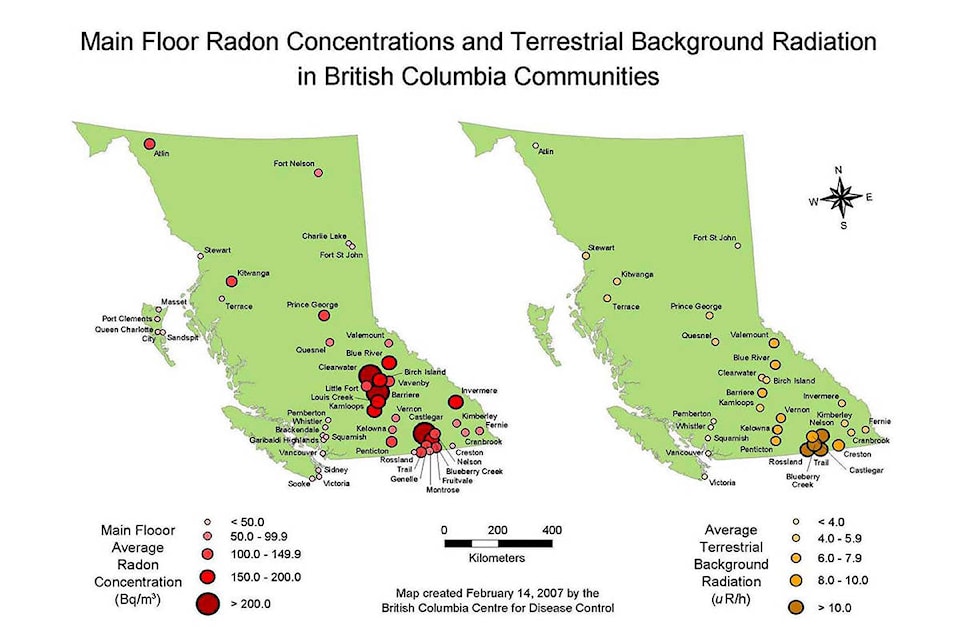By Lesley Coates
Radon gas is the second leading cause of lung cancer after smoking. It may contribute to as much as 16 per cent of all lung cancers.
Radon, when combined with tobacco smoke, including second-hand smoke, can increase the risk substantially. Health Canada estimates that one in three smokers exposed to high radon levels will develop lung cancer.
Radon is a naturally occurring gas found in the ground throughout the world. Most homes that are in contact with the ground will contain some amount of radon gas. Radon becomes more of a concern when it reaches high levels. According to Health Canada about seven per cent of the Canadian homes have radon levels that may be putting residents at risk.
Here in the B.C. Interior we have some “hot spot” areas with high radon levels in approximately 40 per cent of homes.
Radon gas is colorless, odorless and tasteless, so the only way to know if the radon levels in your home are high is to conduct testing. Many houses contain bedrooms, rec rooms or suites in the basement. Being heavier than air, radon can accumulate in basements and then move throughout the building through natural indoor air movement.
The best time to test your home for radon gas is now through April. During the cooler months windows and doors are often closed and rising warm air in a home draws more radon from the ground.
Testing a home is easy and inexpensive. Testing involves placing a small puck-like kit within the lowest area of the home that could be occupied for at least four hours per day. The kit should remain in that location for a minimum of three months and then can be sent to a laboratory to get the results.
Just because your neighbors may have tested their homes and have low results does not mean your home is low too. The test results for your home can be very different. This is because there are many factors that can influence the levels within a building.
Essentially, radon takes the easiest path into our homes, and this can vary between homes. Radon can enter a home through the foundation, including concrete and more so through cracks in a foundation or dirt floor such as in older crawl spaces. It can also enter a home through the ventilation system.
The bottom line is that everyone needs to test their homes for radon to see if this gas (dubbed as the “silent killer”) is lurking. If elevated radon levels are found, basic measures can be taken to address the problem.
Test kits are available from BC Lung Association – order online at www.radonaware.ca or call 1-800-665-LUNG (5864).
– Lesley Coates is a public health communications consultant with Interior Health
